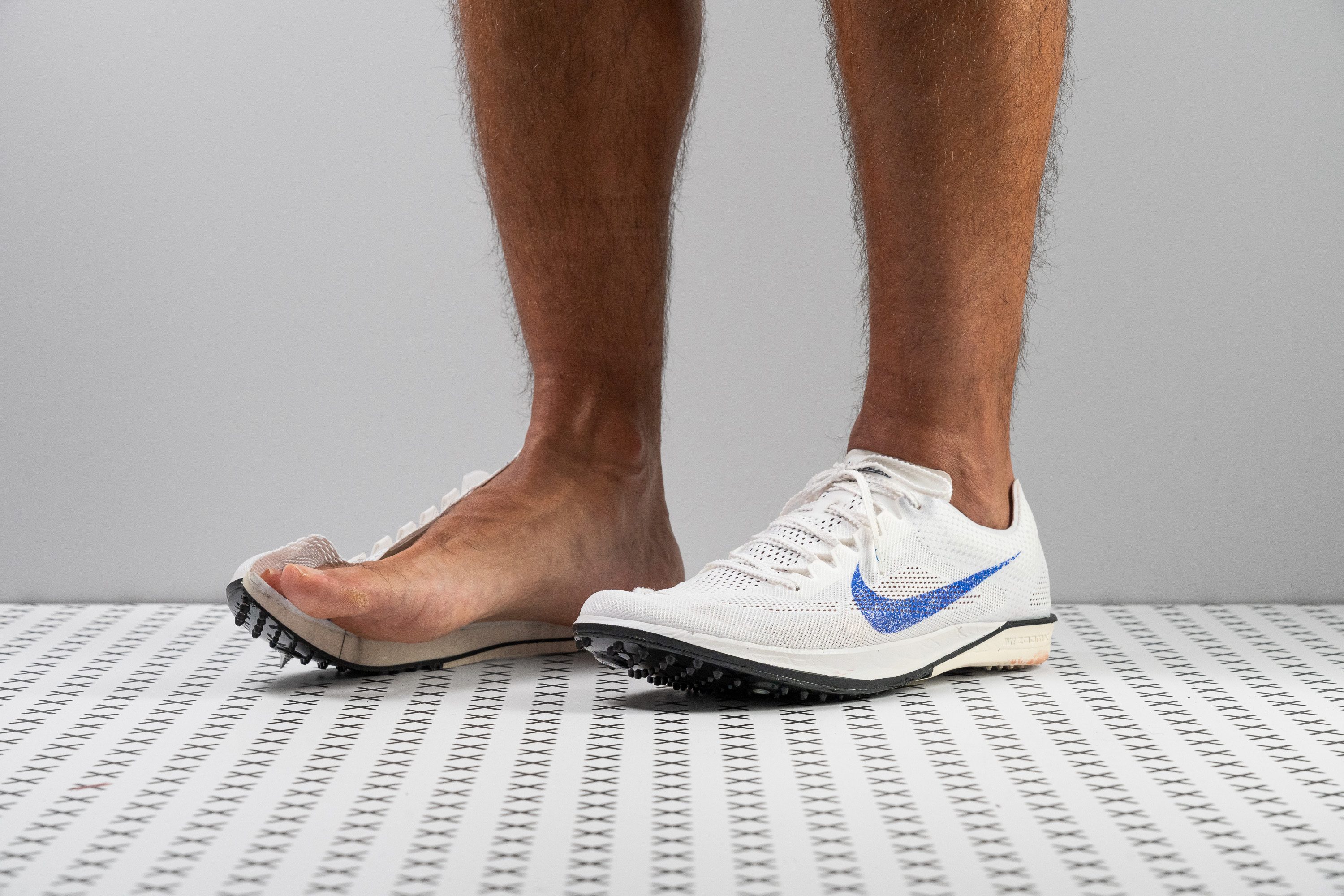Nuestra conclusión
Pros
- Ideales para las pruebas de larga distancia en pista
- Parte superior transpirable
- Placa de Pebax de extensión completa
- Estabilidad mejorada
- Nuevo diseño de la suela exterior con 4 clavos
- Ajuste excelente con cordones dentados
- Mediasuela muy reactiva
- También sirven para las carreras de 800 m
Contras
- A la parte superior le falta durabilidad
- Ahora pesan un poco más
- Ahora son más caras
Veredicto de los usuarios
- Top 24% entre Zapatillas de clavos
- Top 28% entre Zapatillas Nike de atletismo con clavos
- Top 16% más vendidas zapatillas de atletismo
Comparativa
Las zapatillas de clavos más parecidas
+ + Añadir unas zapatillas | |||||
|---|---|---|---|---|---|
| Puntuación global | 95 Notables | 90 Notables | 79 Aceptables | 96 Excelentes | |
| Precio | 175 € | 220 € | 220 € | 175 € | |
| Peso laboratorio | 5.1 oz / 145g | 4.8 oz / 135g | 4.6 oz / 129g | 4.7 oz / 133g | |
| Transpirabilidad | Alta | Alta | Alta | Alta | |
| Uso | Larga distanciaMedia distancia | Larga distanciaMedia distancia | Larga distanciaMedia distancia | Larga distanciaMedia distancia | |
| Clavos extraíbles | ✓ | ✓ | ✗ | ✓ | |
| Anchura / ajuste | Ancha | Media | Ancha | Estrecha | |
| Anchura de la parte delantera | Media | Media | Media | Media | |
| Drop laboratorio | 0.2 mm | 0.6 mm | 4.1 mm | 2.0 mm | |
| Talla | Tallan bien | Tallan bien | Tallan un poquito pequeño | Tallan un poquito pequeño | |
| Rigidez de la mediasuela | Equilibrada | Blanda | Equilibrada | Equilibrada | |
| Acolchado de la lengüeta | Estándar | Muy fina | Fina | Estándar | |
| Flexibilidad | Moderada | Moderada | - | Flexible | |
| Rigidez torsional | Firmes | Firmes | Firmes | Firmes | |
| Rigidez del contrafuerte del talón | Flexibles | Flexibles | Flexibles | Flexibles | |
| Grosor de la suela | Estándar | Estándar | Estándar | Estándar | |
| Dureza de la suela | - | - | - | Muy blanda | |
| Tirador del talón | Ninguno | Ninguno | Ninguno | Ninguno | |
| Altura de la suela en la zona del talón laboratorio | 19.9 mm | 19.9 mm | 19.8 mm | 19.8 mm | |
| Antepié | 19.7 mm | 19.3 mm | 15.7 mm | 17.8 mm | |
| Grosor de la plantilla | Muy gruesa | Gruesa | Fina | Estándar | |
| Anchura de la mediasuela - antepié | Ancha | Estándar | Ancha | Ancha | |
| Anchura de la mediasuela - talón | Estándar | Muy ancha | Estándar | Estándar | |
| Clasificación | #3 Top 24% | #8 38% inferior | #13 1% inferior | #1 Top 8% | |
| Popularidad | #2 Top 16% | #3 Top 24% | #5 Top 39% | #8 38% inferior |
Quién debería comprárselas
Después de nuestras pruebas de laboratorio, creemos que las Dragonfly 2 son una opción ideal para:
- Los corredores que quieran destacar en las pruebas de atletismo que van de los 1500 metros en adelante. Este modelo está diseñado para ofrecer sujeción en largas distancias gracias a su amortiguación ZoomX.
- Los atletas a los que las zapatillas de clavos estándar les parecen demasiado apretadas. Las Dragonfly 2 son más espaciosas en el antepié, proporcionando un equilibrio entre un ajuste ceñido y espacio donde se necesita.
- Los fans incondicionales de las Dragonfly originales. Esta actualización cuenta con una placa de longitud completa y un retorno de energía mejorado, garantizando una experiencia reactiva y eficiente al entrenar y al competir.
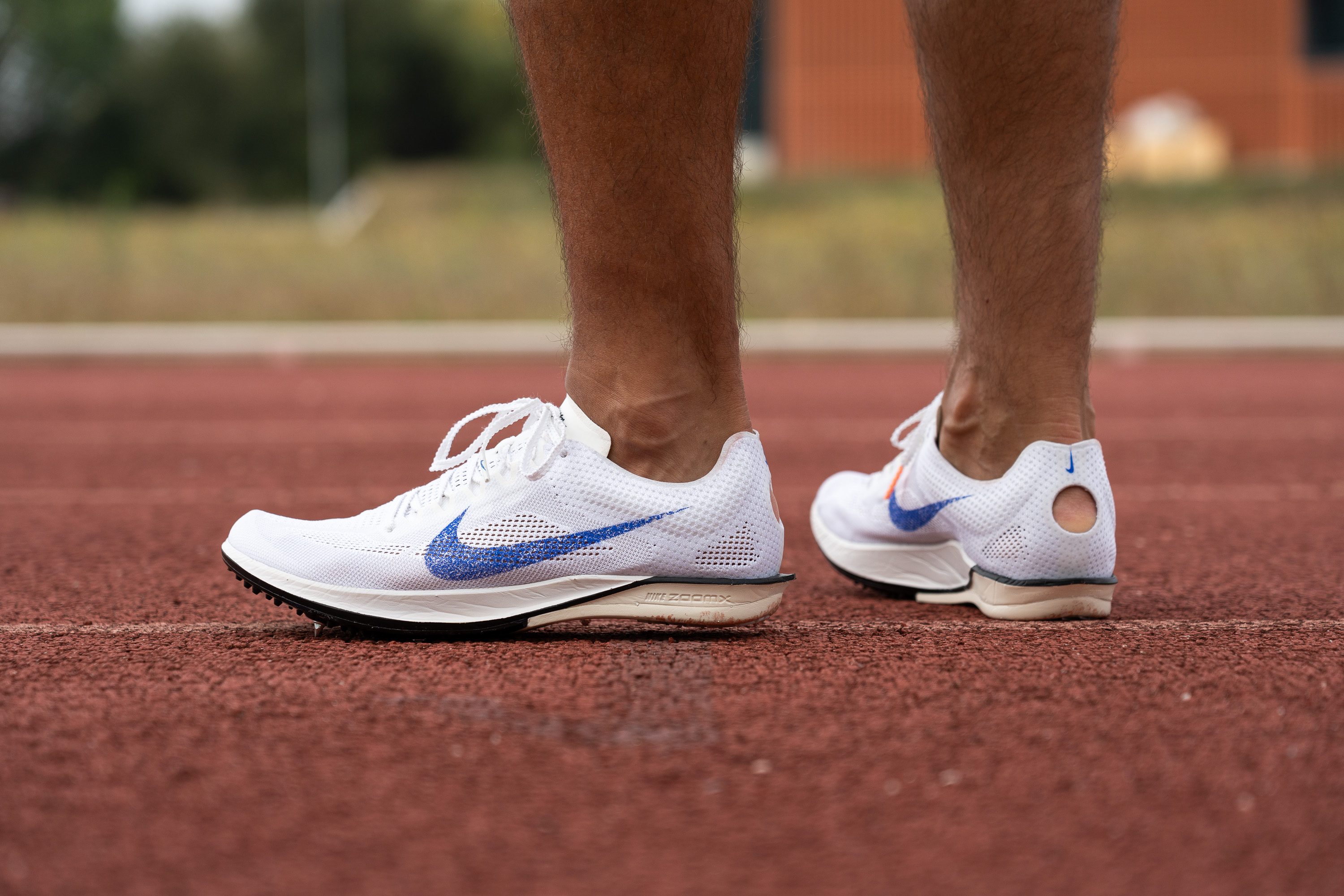
Quién NO debería comprárselas
Aunque las Nike Dragonfly 2 podrían volver a ocupar la primera posición entre las zapatillas de clavos de atletismo, no son perfectas para todo el mundo. Hemos observado que los corredores que se enfrentan a distancias más cortas, como 800 m, o las personas más pesadas con un estilo de carrera potente, pueden sentir que las Nike Air Zoom Maxfly ofrecen un rendimiento de primera, mejorando los tiempos tanto en sus carreras como en las sesiones de entrenamiento por intervalos.
Además, nos hemos dado cuenta de que el precio de las Dragonfly 2 ha aumentado en comparación con el de sus predecesoras, que es algo que puede echar para atrás a algunos compradores. A los atletas que quieren unas zapatillas de clavos de Nike mucho más baratas, les recomendamos las Zoom Rival D 10.

Amortiguación
Altura de la suela en la zona del talón
La característica más destacada de las Dragonfly 2 es su amortiguación, crucial para las zapatillas para larga distancia diseñadas para pruebas de más de 1500 metros, sobre todo 5K y 10K. Al fin y al cabo, más espuma bajo los pies equivale a unas piernas menos cansadas al final de la carrera.
Nike ha decidido jugársela con respecto a los límites de la nueva normativa de 20 mm de altura de la suela la World Athletics. Las Dragonfly 2 miden exactamente 19,9 mm, así que, sí, están más que listas para las competiciones oficiales.
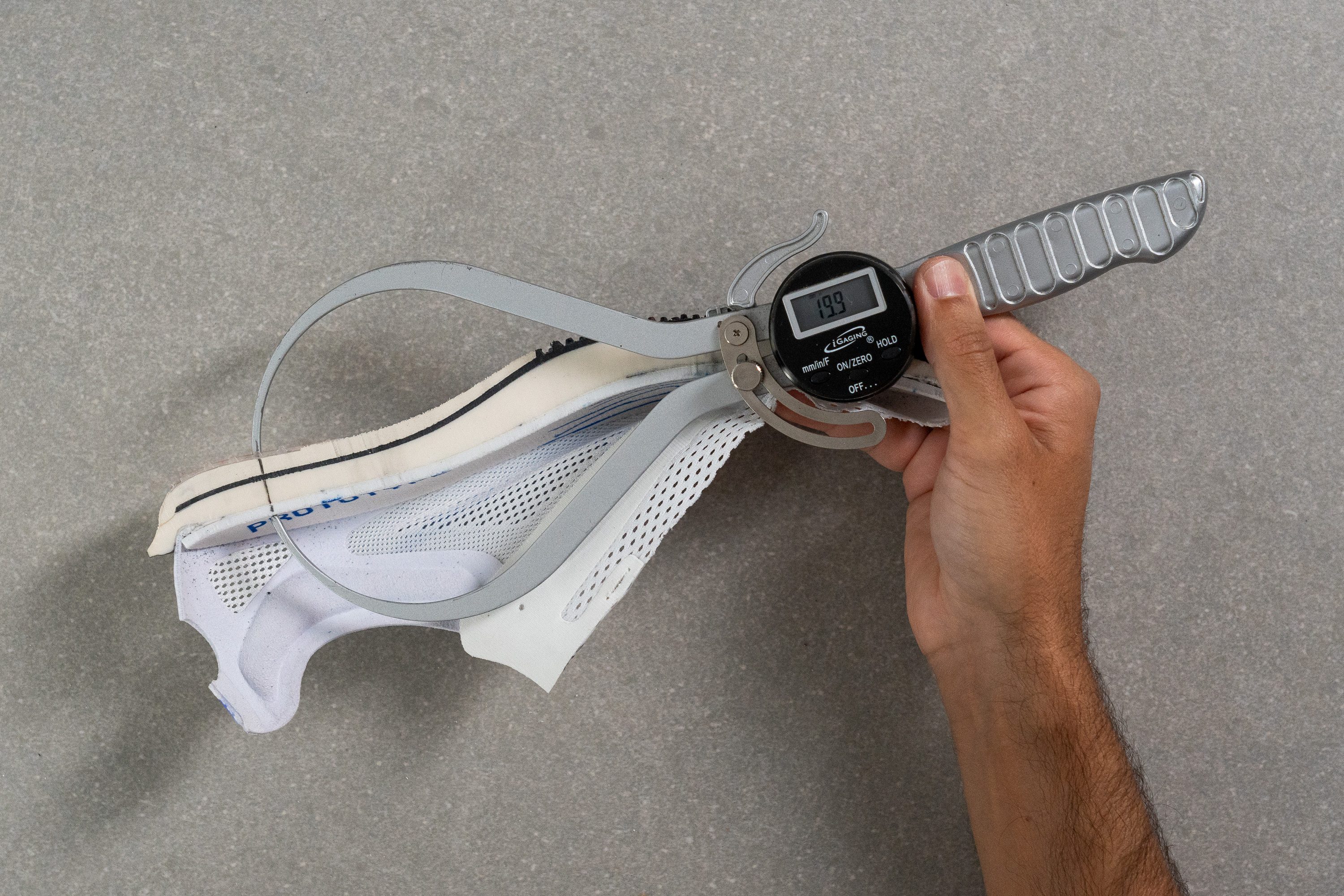
| Dragonfly 2 | 19.9 mm |
| Media | 15.8 mm |
Altura de la suela en el antepié
Al antepié también le gusta el riesgo, alcanzando ahora una altura de 19,7 mm, y acercándose a los infames 20 mm. Esto supone una mejora importante respecto a la versión 1, que tenía una suela con una altura de solo 17,8 mm en esta zona.

| Dragonfly 2 | 19.7 mm |
| Media | 14.8 mm |
Drop
El bajísimo drop de 0,2 mm siguiendo la altura de estas zapatillas en el talón y en la zona de los dedos nos da como resultado un diseño casi plano para las Dragonfly 2. Nos parece una sabia elección destinada a maximizar la cantidad de espuma ZoomX bajo el pie para las pruebas más largas y agotadoras.
Al maximizar la amortiguación hasta el límite de los 20 mm desde el talón hasta la zona de los dedos, los corredores pueden disfrutar de la máxima amortiguación permitida por las normas actuales. Y mira, si esto se traduce en un drop cero, ¿pues qué más da?

| Dragonfly 2 | 0.2 mm |
| Media | 1.0 mm |
Suavidad de la mediasuela
El encanto de las Dragonfly 2 radica en la reactividad de su mediasuela ZoomX. Aunque no se siente tan sumamente acolchada como algunas zapatillas para correr por asfalto, ya que nuestro durómetro marcó 24,5 HA, su rendimiento nos ha dejado muy impresionados.
Como la altura de la suela tiene ese límite de 20 mm, optar por una espuma que sea como una nube no es una buena idea, ya que se chafaría demasiado y la experiencia sería menos reactiva, sobre todo porque esta edición de las Dragonfly 2 no incluye una placa de carbono rígida.

Pero, espera, ¿estas zapatillas son reactivas entonces? Sí, sí lo son, ¡no te preocupes! Cuentan con la misma ZoomX mágica y con rebote que tanto nos gustó de las series Alphafly y Vaporfly, proporcionando un retorno de energía tremendo. Y lo que es más importante, hizo que nuestros gemelos no terminasen hechos polvo, ya que ayuda a que las piernas no se cansen tanto y así ese empujón final de las últimas vueltas en las carreras más largas sea posible.
Como prueba de su eficacia, no hay más que ver a Sifan Hassan, que se colgó la medalla de bronce en los 10 km un viernes por la noche con sus Dragonfly, ¡y luego ganó el maratón olímpico con las Alphafly 3 solo 36 horas después!

| Dragonfly 2 | 24.5 HA |
| Media | 24.3 HA |
Clavos extraíbles
Las Dragonfly 2 tienen un nuevo diseño con 4 clavos, un cambio con respecto a los 6 que tenía el modelo original.
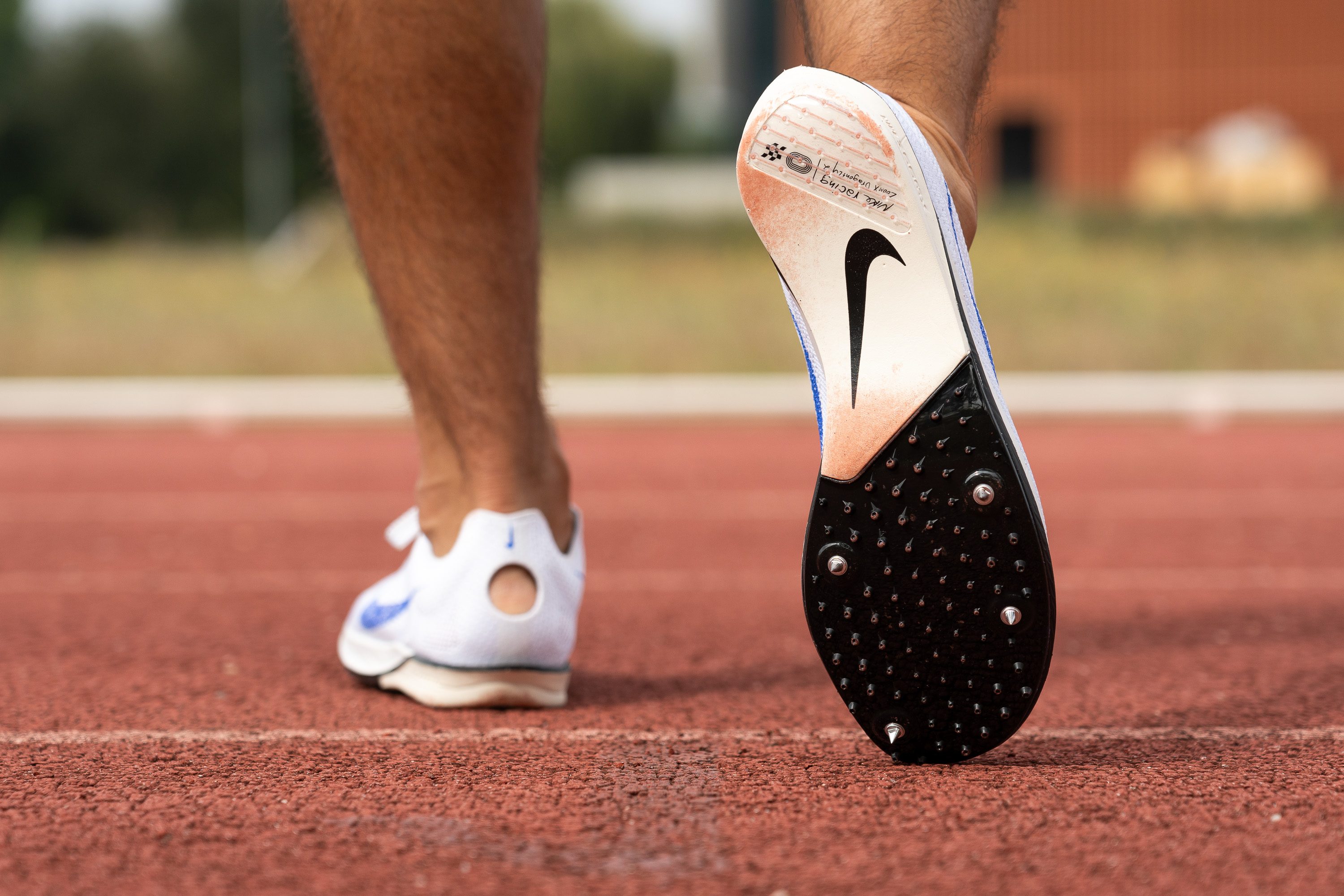
Cada clavo es desmontable con la herramienta que traen las zapatillas, lo que te ofrece la flexibilidad de personalizar su tracción para tu pista favorita.
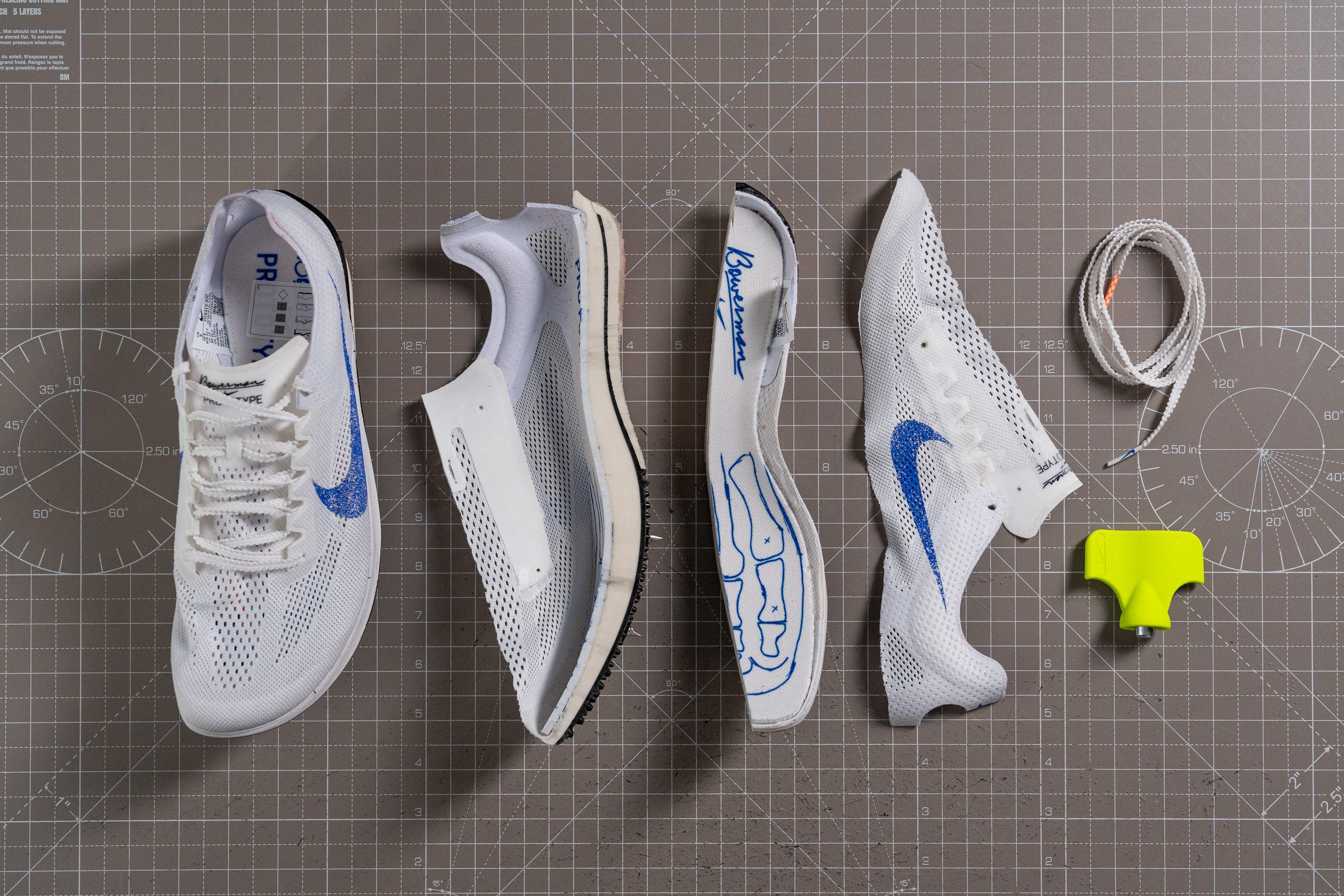
Placa
Las Dragonfly originales tienen una placa totalmente de Pebax, y esta segunda versión también, solo que... ahora es un poquito más rígida. Solo las Dragonfly 2 Elite cuentan con una Flyplate de fibra de carbono.
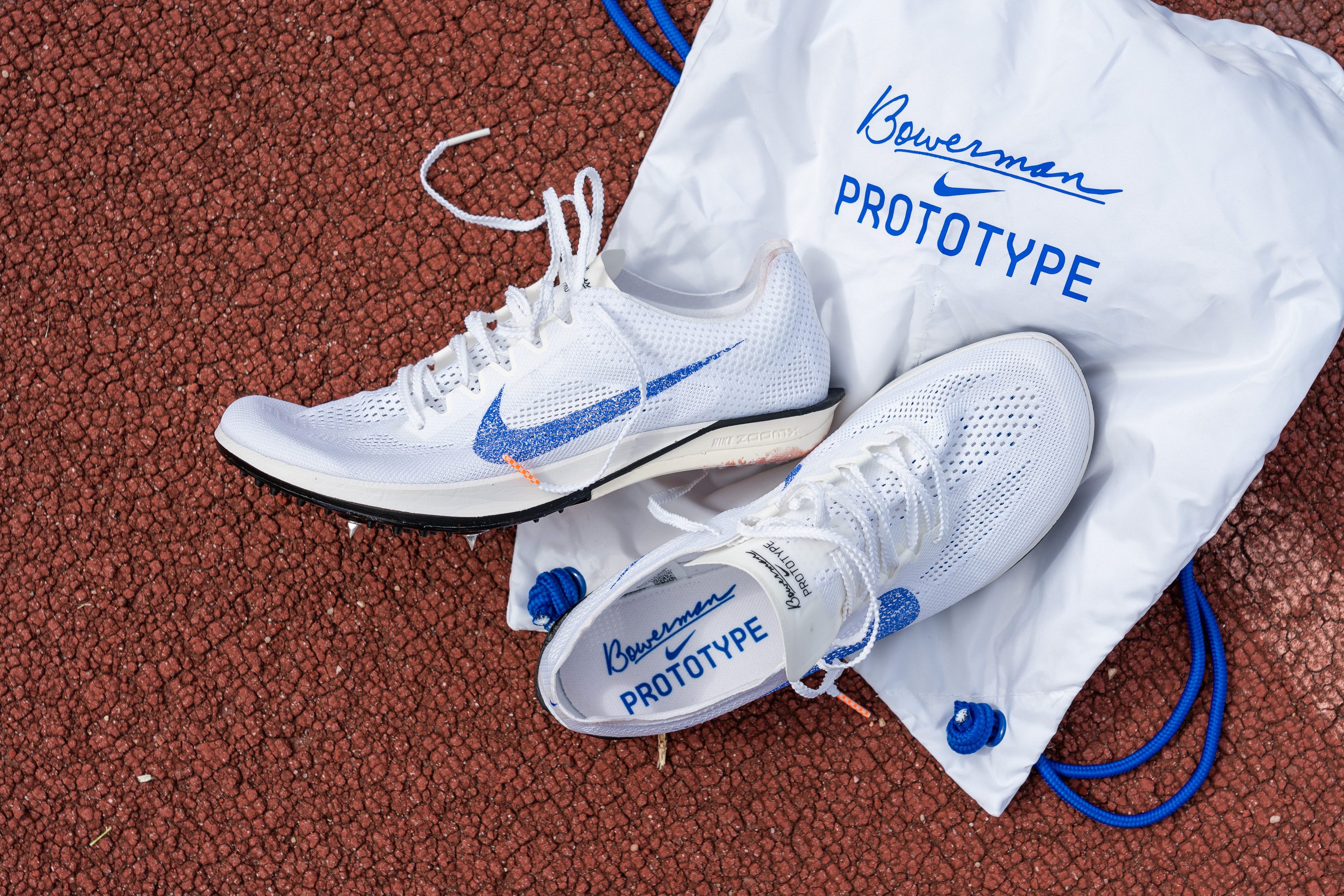
Sin embargo, como acabamos de decir, la nueva placa Pebax va desde el talón hasta el antepié, haciendo contacto directo con la superficie de tartán de la pista (sin espuma de por medio). Así que, sin duda, es más rígida que antes.

Tallaje y ajuste
Talla
Las Nike Dragonfly 2 tallan bien (64 votos).
Anchura / Ajuste
Las Dragonfly 2 tienen un ajuste muy espacioso para ser unas zapatillas de atletismo, ya que están diseñadas para las largas distancias.
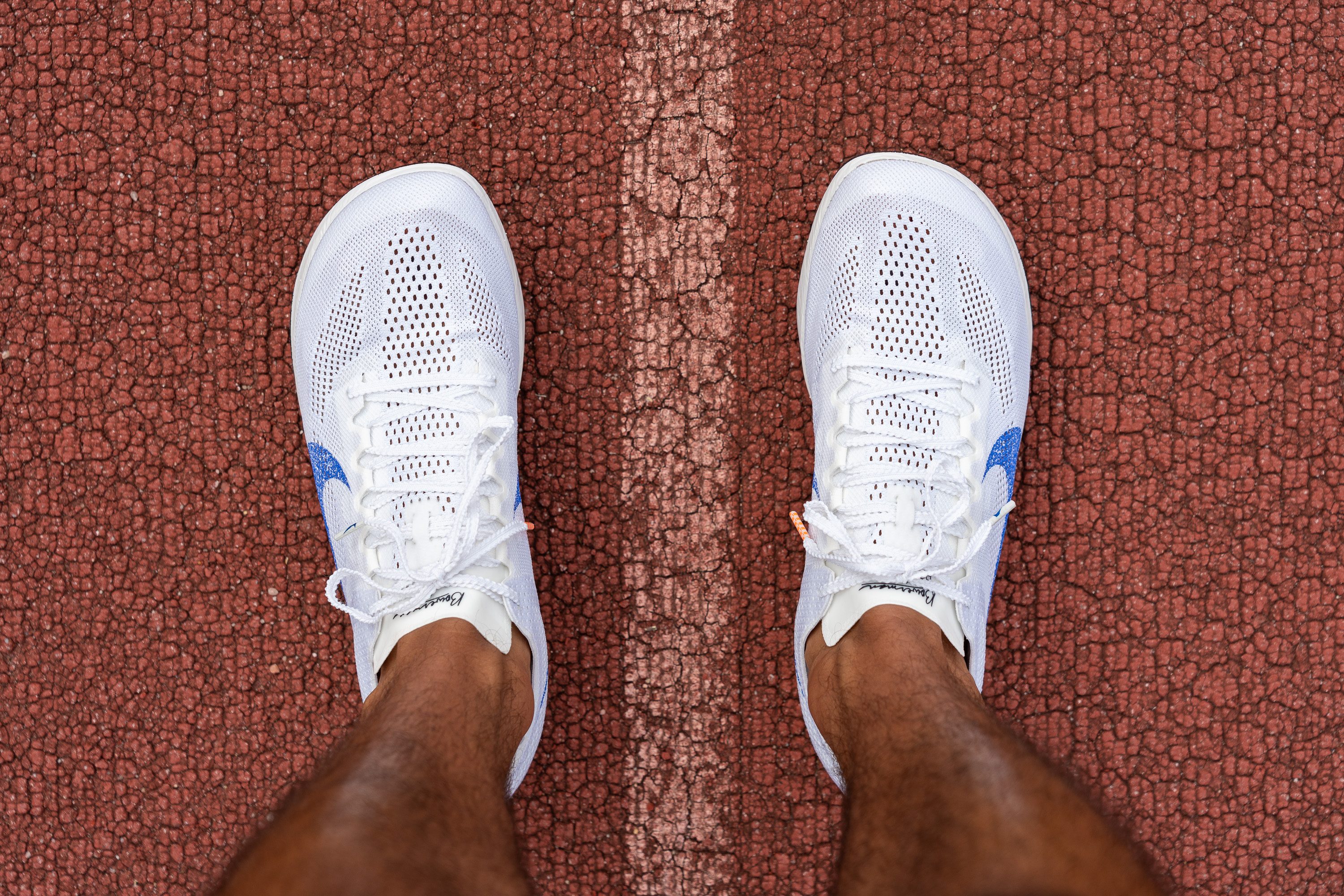
Para asegurarnos de que no nos equivocábamos, hicimos un molde de gel replicando a la perfección el interior de este modelo y lo medimos utilizando nuestro calibre digital.
Pues mira tú, la herramienta marcó un resultado por encima de la media: 90,3 mm en el punto más ancho. Esto supera la anchura de la mayoría de las zapatillas de atletismo del mercado, ¡un resultado que no está nada mal para ser unas Nike!
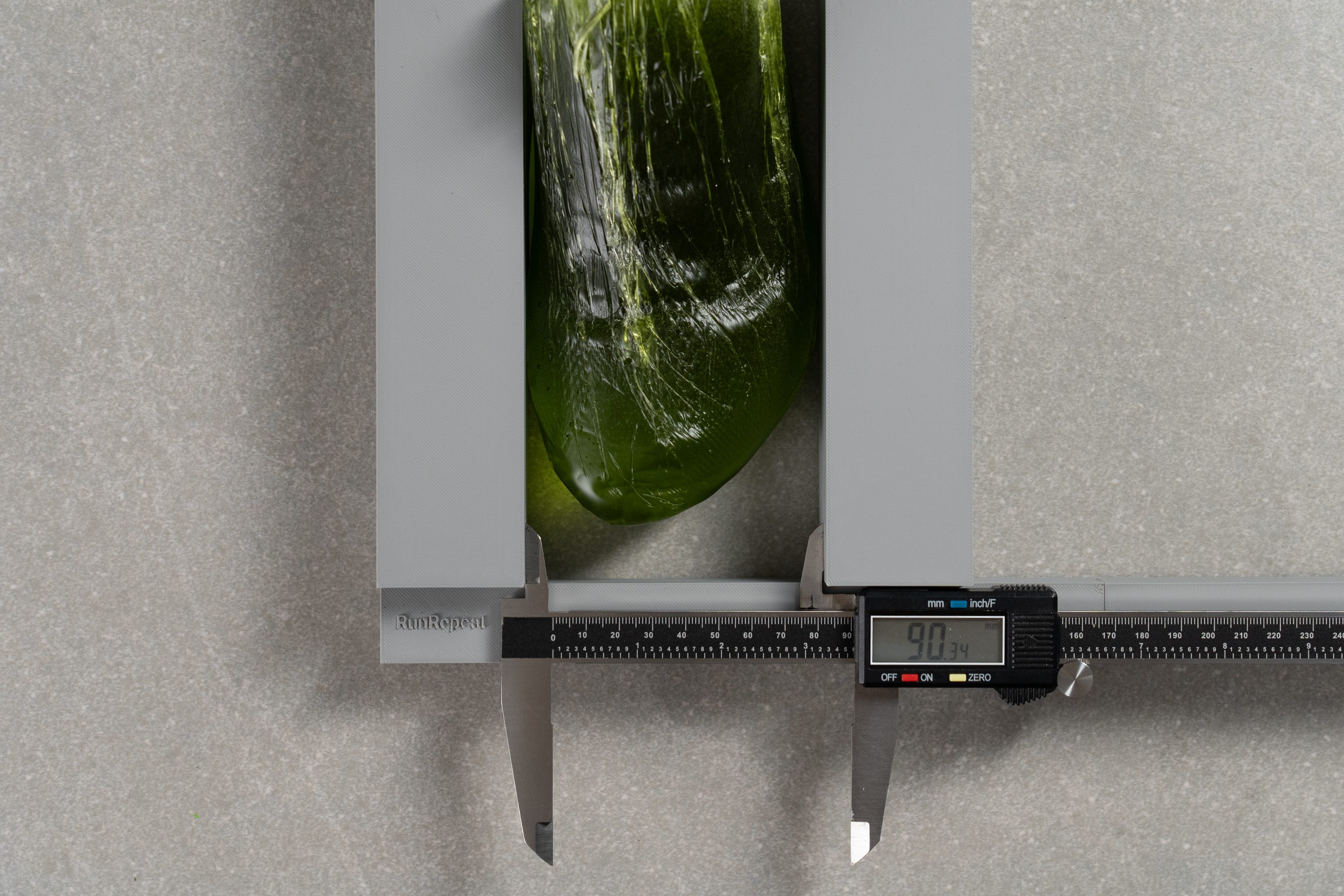
| Dragonfly 2 | 90.3 mm |
| Media | 88.2 mm |
Anchura de la parte delantera
La zona del dedo gordo también obtuvo un resultado ancho: 71,3 mm. Es un poco más espaciosa que la media, pero como son unas zapatillas de atletismo, puedes esperarte un ajuste bastante ceñido y orientado al rendimiento.
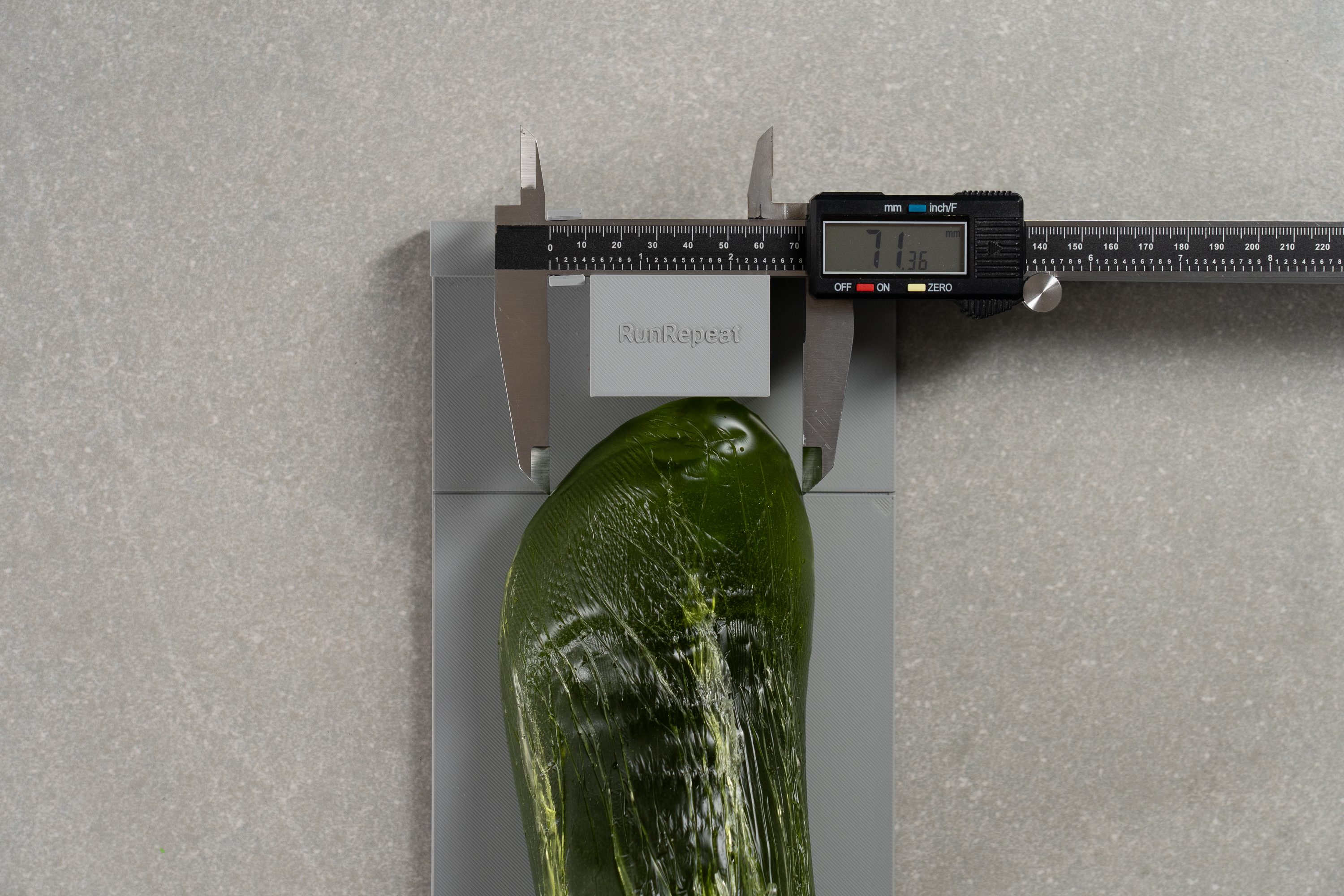
| Dragonfly 2 | 71.3 mm |
| Media | 68.8 mm |
Altura de la parte delantera
Estas Nike también nos ofrecieron un espacio vertical bastante generoso.
Con una altura de 27,1 mm en su parte delantera, tus dedos tendrán más espacio que en unas zapatillas de atletismo estándar.

| Dragonfly 2 | 27.1 mm |
| Media | 26.1 mm |
Flexibilidad / Rigidez
Les hicimos nuestra prueba estándar de 30 grados a las Dragonfly 2 y el resultado fue de 9,2 N.
Es una cifra bajísima que indica, muy claramente, que este modelo no tiene una placa de carbono. De lo contrario, este mismo resultado podría haberse triplicado fácilmente. Es ideal para los atletas que están buscando una pisada ágil pero flexible.

| Dragonfly 2 | 9.2N |
| Media | 13.0N |
Peso
Las Dragonfly 2 siguen siendo ligerísimas con sus 145 g, aunque esta nueva versión pesa un par de gramos más que la anterior, que no pasaba de los 133 g.
Creemos que este leve aumento de peso se debe, probablemente, a la incorporación de la espuma ZoomX en el antepié, que proporciona una amortiguación y un retorno de energía mejorados. Así que, desde nuestro punto de vista, estos pocos gramos extra estarán justificados para la mayoría de los corredores, ya que estamos hablando de unas zapatillas de clavos para larga distancia.

| Dragonfly 2 | 5.1 oz (145g) |
| Media | 5.5 oz (156g) |
Transpirabilidad
Cuando sacamos las Dragonfly 2 de su caja, nos sorprendió inmediatamente la malla ultraligera de su parte superior, que estaba totalmente de llena de agujeritos para mejorar el flujo de aire.
Nuestra prueba con la máquina de humo lo confirmó, así que le dimos un 5/5 perfecto a esta actualización. Nos parece una característica esencial para los corredores que compiten en eventos de 10K sin calcetines.
La luz nos ayudó a resaltar las zonas con ventilación mejorada de estas zapatillas. Sorprendentemente, el flujo de aire se extiende por todo el mediopié, incluyendo también una sección más fina a cada lado del talón, y demostrándonos una meticulosa atención al detalle.
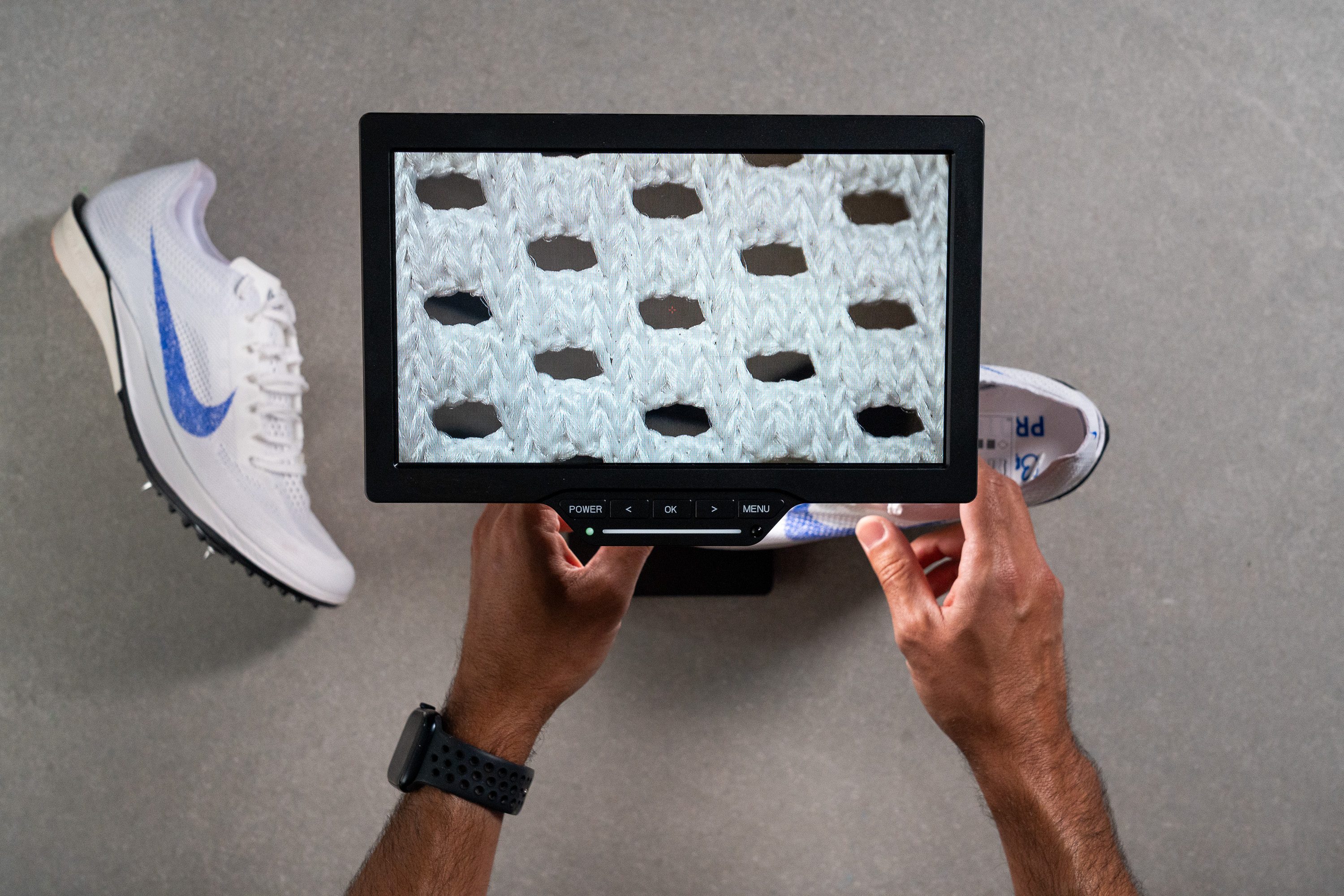
Les echamos un vistazo más de cerca a esos agujeritos de ventilación y nos encantaron.
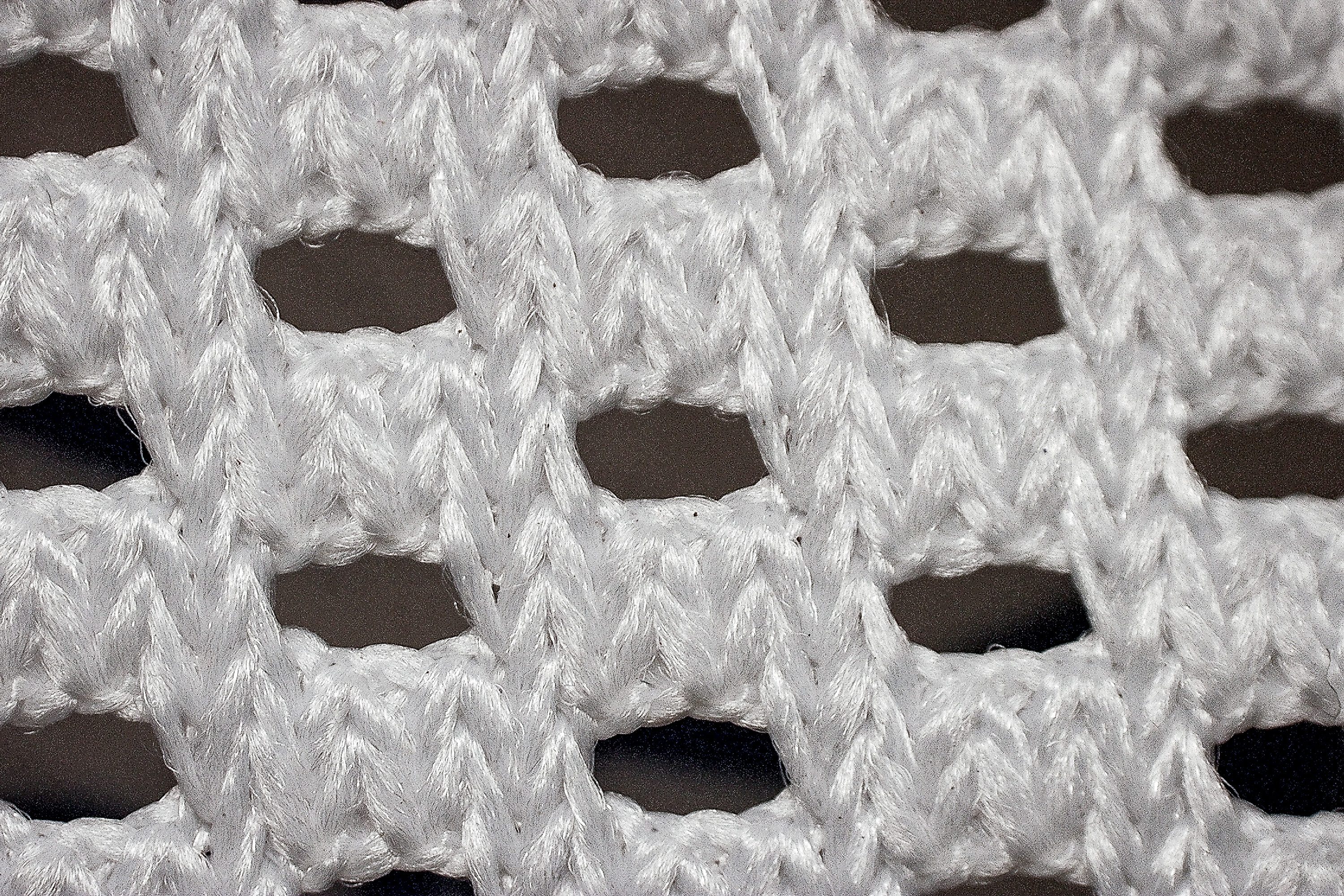
La parte superior está fabricada con una sola capa, sin telas secundarias ni zonas más ásperas, lo que permite una circulación del aire sin obstáculos.
La malla es un poquito elástica, proporcionando un ajuste ceñido al tiempo que conserva su transpirabilidad. También descubrimos que, aunque la mayor parte de la parte superior tiene un acolchado mínimo, hay almohadillas de espuma estratégicamente colocadas debajo de los tobillos que se extienden hasta el talón, añadiendo un toque de comodidad donde más se necesita.
| Dragonfly 2 | 5 |
| Media | 4 |
Estabilidad
Rigidez torsional
Durante nuestra prueba de rigidez torsional, descubrimos que las Dragonfly 2 eran bastante rígidas.
A pesar de incorporar una placa Pebax flexible, casi no pudimos retorcer las zapatillas. Por lo tanto, les dimos la puntuación máxima, un 5/5. Este rendimiento supone una mejora con respecto a sus predecesoras, que se llevaron un 4/5 en esta misma prueba.
| Dragonfly 2 | 5 |
| Media | 3.2 |
Rigidez del contrafuerte del talón
Aunque las DF2 tienen una estructura muy rígida, el contrafuerte del talón es todo lo contrario, ya que se llevó un 1/5 en nuestra evaluación manual. Eso sí, el cierre sigue siendo bueno gracias al agujero tan grande que tienen, que es más funcional que decorativo, a pesar de que las apariencias puedan sugerirte lo contrario.
| Dragonfly 2 | 1 |
| Media | 1.6 |
Anchura de la mediasuela - antepié
Las Dragonfly originales eran el modelo de referencia entre las zapatillas de clavos de atletismo para larga distancia, y está claro que Nike optó por un enfoque conservador con sus sucesoras, haciendo solo mejoras pequeñas, y preservando así gran parte del diseño de las zapatillas. Entre estos cambios sutiles están las dimensiones de la mediasuela.
Al medirlas, hemos visto que hay un pequeño cambio, ya que en la segunda versión el resultado ha sido 98,0 mm en vez de los 98,2 mm de las originales. Pero bueno, que estos 0,2 mm no se notan nada de nada, porque prácticamente es el grosor de un pelo.

| Dragonfly 2 | 98.0 mm |
| Media | 94.4 mm |
Anchura de la mediasuela - talón
El talón es un poco más ancho, con 62,4 mm, en comparación con los 60,2 mm de la primera versión. Esta pequeña diferencia no es demasiado importante, ya que caer con el talón no es tan común en los entrenamientos o en las carreras de atletismo.
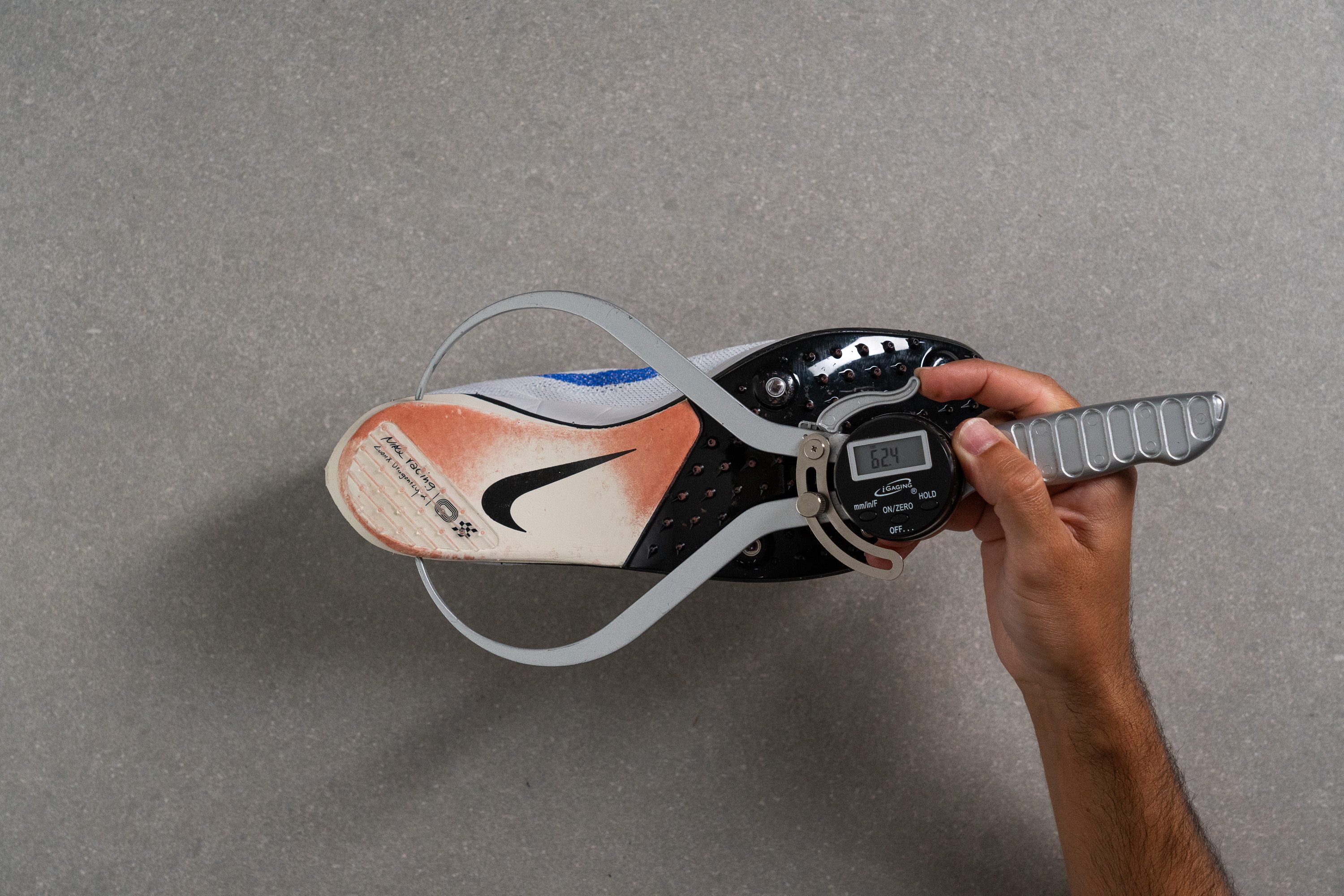
| Dragonfly 2 | 62.4 mm |
| Media | 62.3 mm |
Durabilidad
Durabilidad de la parte delantera
Los enormes agujeros para la ventilación de las Dragonfly 2 nos hicieron dudar de su durabilidad.
De hecho, no pudimos darles más que un bajo 1/5, por lo que lo de superar nuestras expectativas nada. Otras zapatillas de clavos, como las Adidas SP2, que están diseñadas para los sprints, han demostrado que es posible combinar una gran durabilidad con una transpirabilidad excelente.
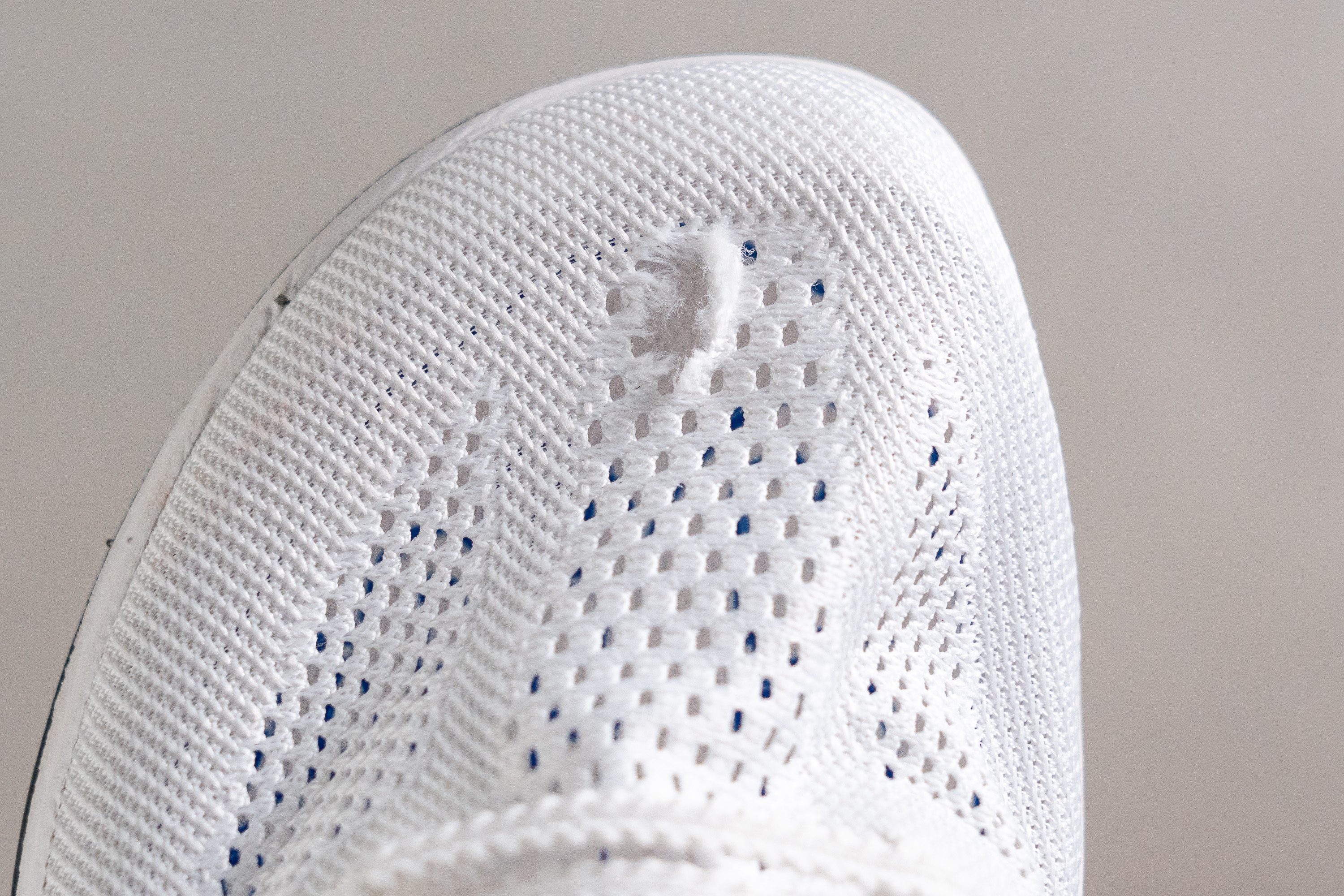
| Dragonfly 2 | 1 |
| Media | 2.3 |
Durabilidad del acolchado del talón
Después del decepcionante resultado de nuestra primera prueba Dremel, hicimos de tripas corazón y nos pusimos a darle caña al contrafuerte del talón de las Dragonfly 2.
Descubrimos una pequeña mejora, ya que se llevó un 2/5 en durabilidad. Incluso con este mínimo aumento, tenemos claro que Nike todavía puede mejorar mucho en este aspecto.

| Dragonfly 2 | 2 |
| Media | 3.5 |
Grosor de la suela
Medimos la suela exterior de las Dragonfly 2 y nos dio 2,6 mm; es decir, es medio milímetro más fina que la de sus predecesoras. Esta reducción es una decisión inteligente, ya que permite añadir más espuma bajo los pies.

| Dragonfly 2 | 2.6 mm |
| Media | 2.7 mm |
Varios
Grosor de la plantilla
La plantilla de las DF2 es más gruesa de lo que nos gustaría. Para nosotros ha sido como perder una oportunidad, ya que utiliza innecesariamente 3,7 mm de espacio potencial para la espuma ZoomX.
A lo mejor Nike podría considerar hacerla más finita o, mejor aún, utilizar una plantilla ZoomX, ¡un cambio que tenemos muchas ganas de ver!
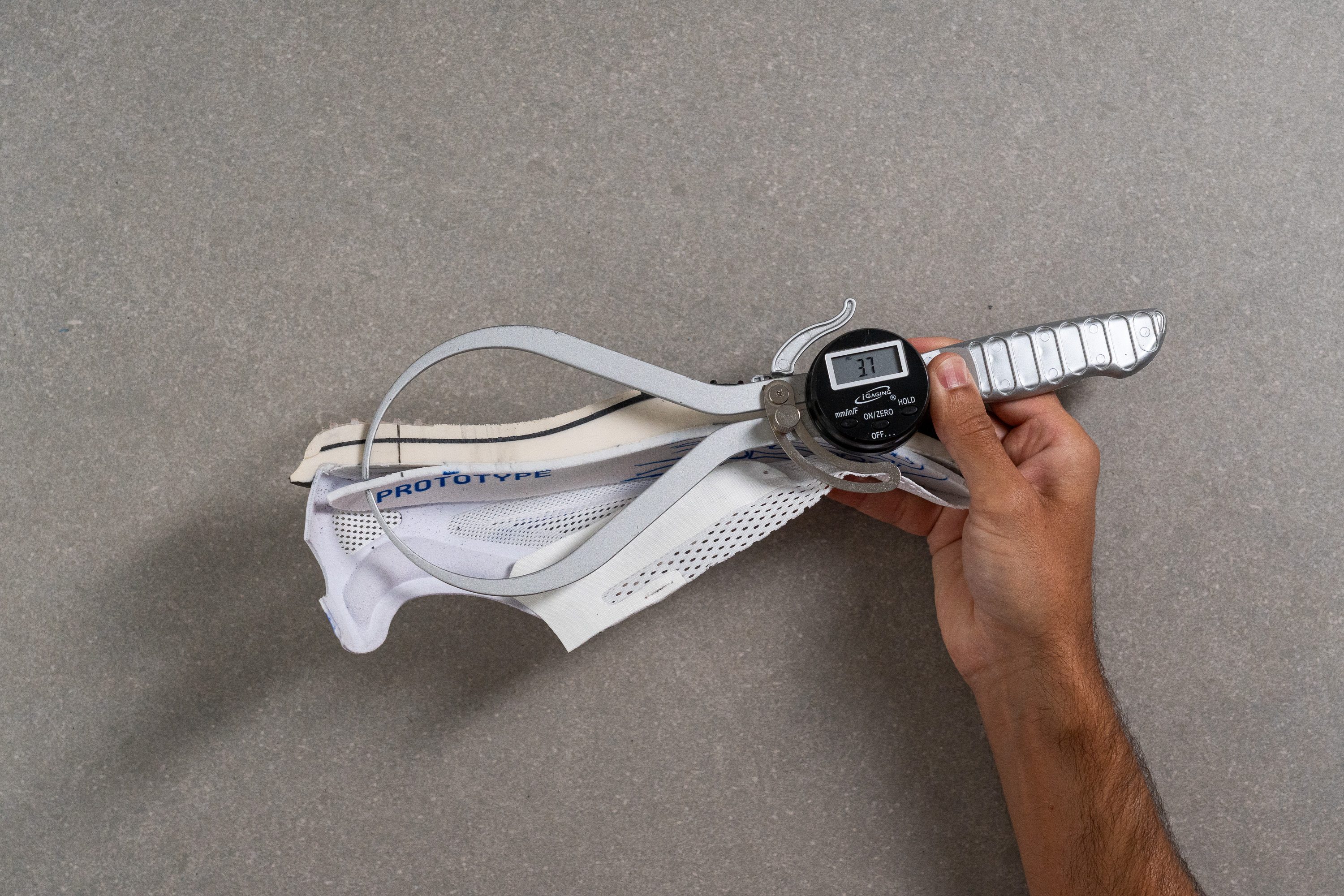
| Dragonfly 2 | 3.7 mm |
| Media | 2.9 mm |
Acolchado de la lengüeta
Descubrimos que Nike hizo todo lo posible para minimizar el peso, utilizando una lengüeta finísima de 1,2 mm. Aunque no es lo más mullido del mundo, está claro que su diseño está enfocado al rendimiento en competición.
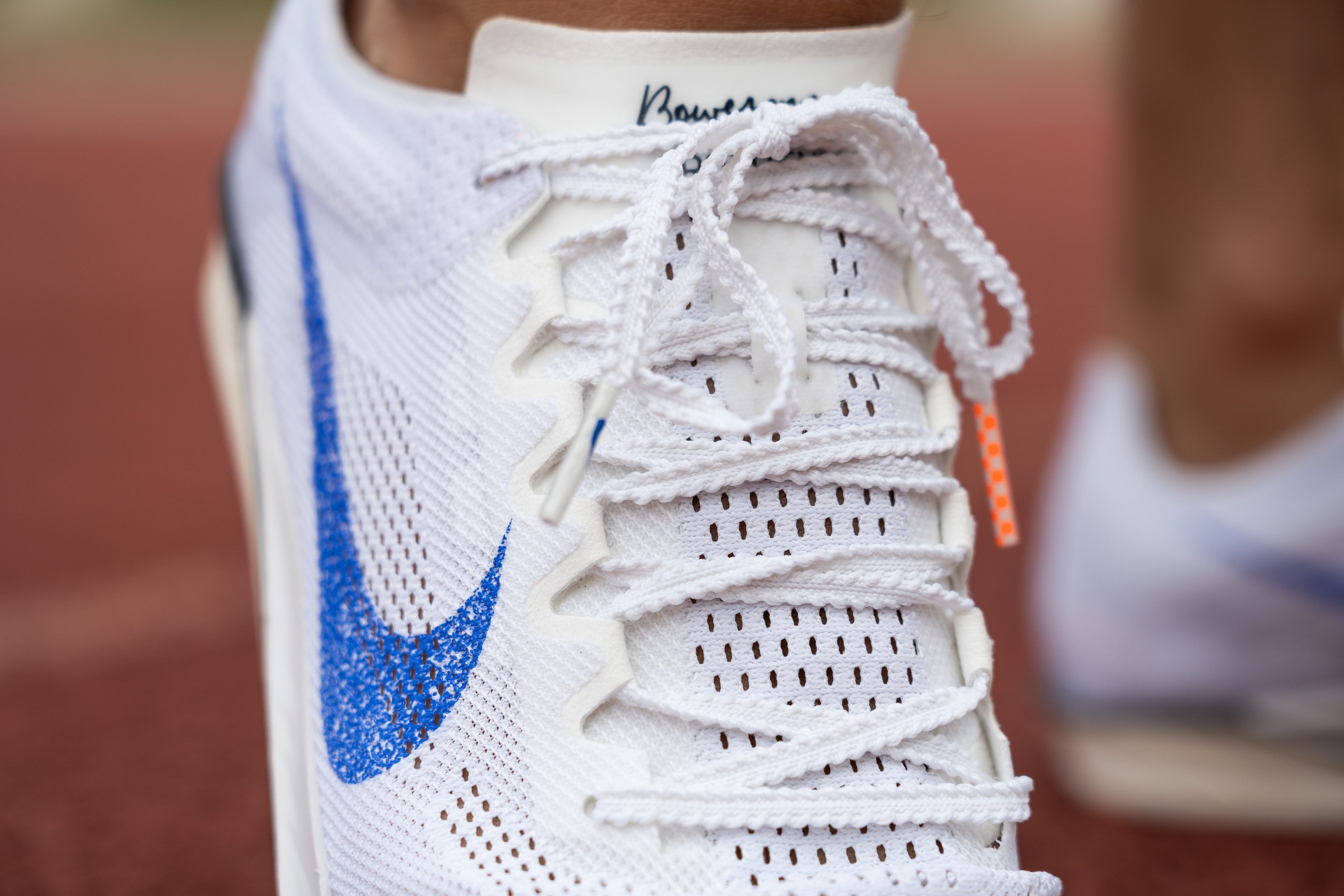
Los cordones dentados, que ya hemos visto en otras zapatillas de competición para correr por asfalto de Nike, como las Alphafly 3 y las Vaporfly 3, son tan geniales como siempre, garantizando un ajuste seguro.
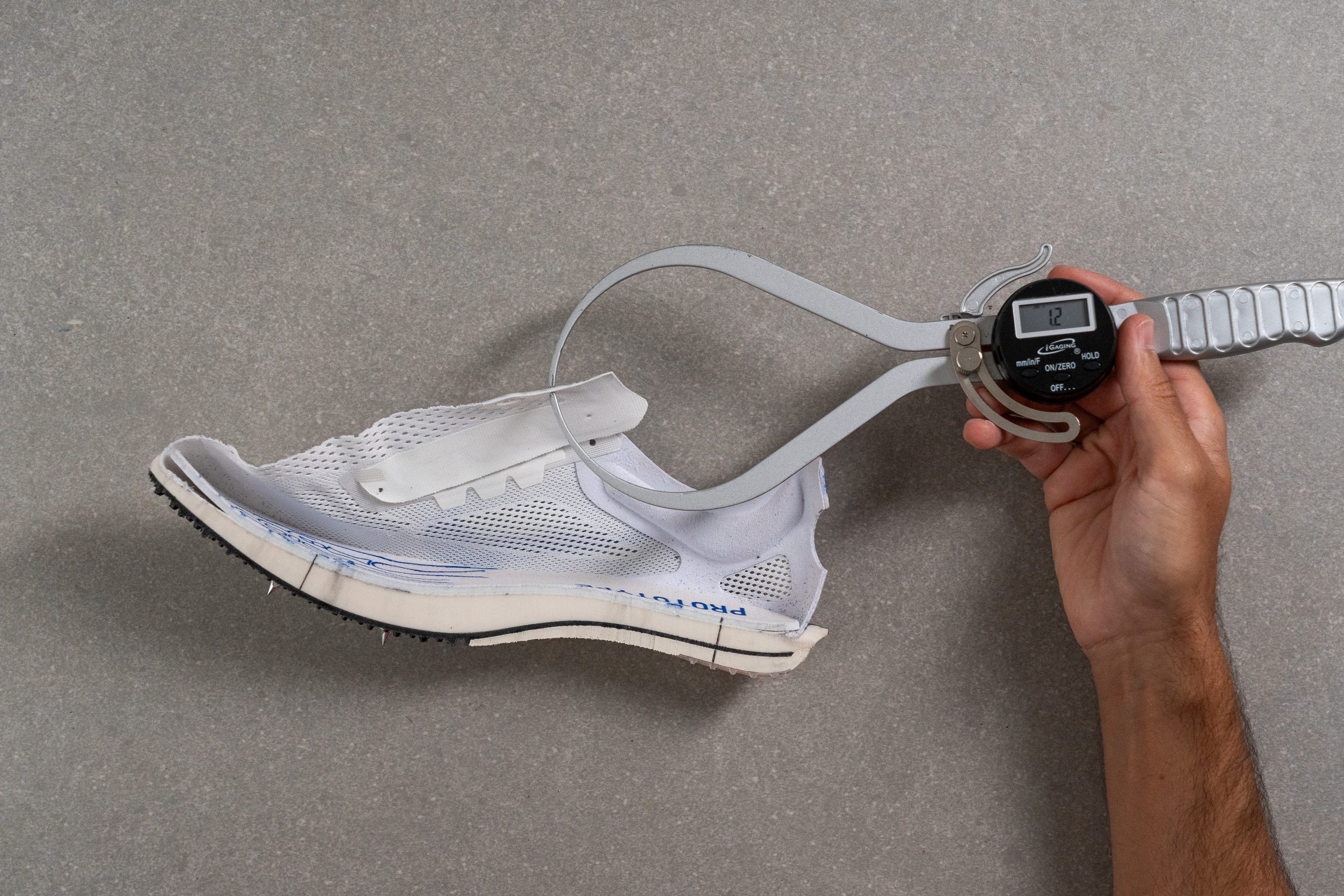
| Dragonfly 2 | 1.2 mm |
| Media | 2.4 mm |
Tirador del talón
Las Dragonfly 2 conservan los míticos agujeros en el talón, que nos han parecido útiles para reducir la presión en esa zona, mejorando el cierre y disminuyendo el peso total de las zapatillas.
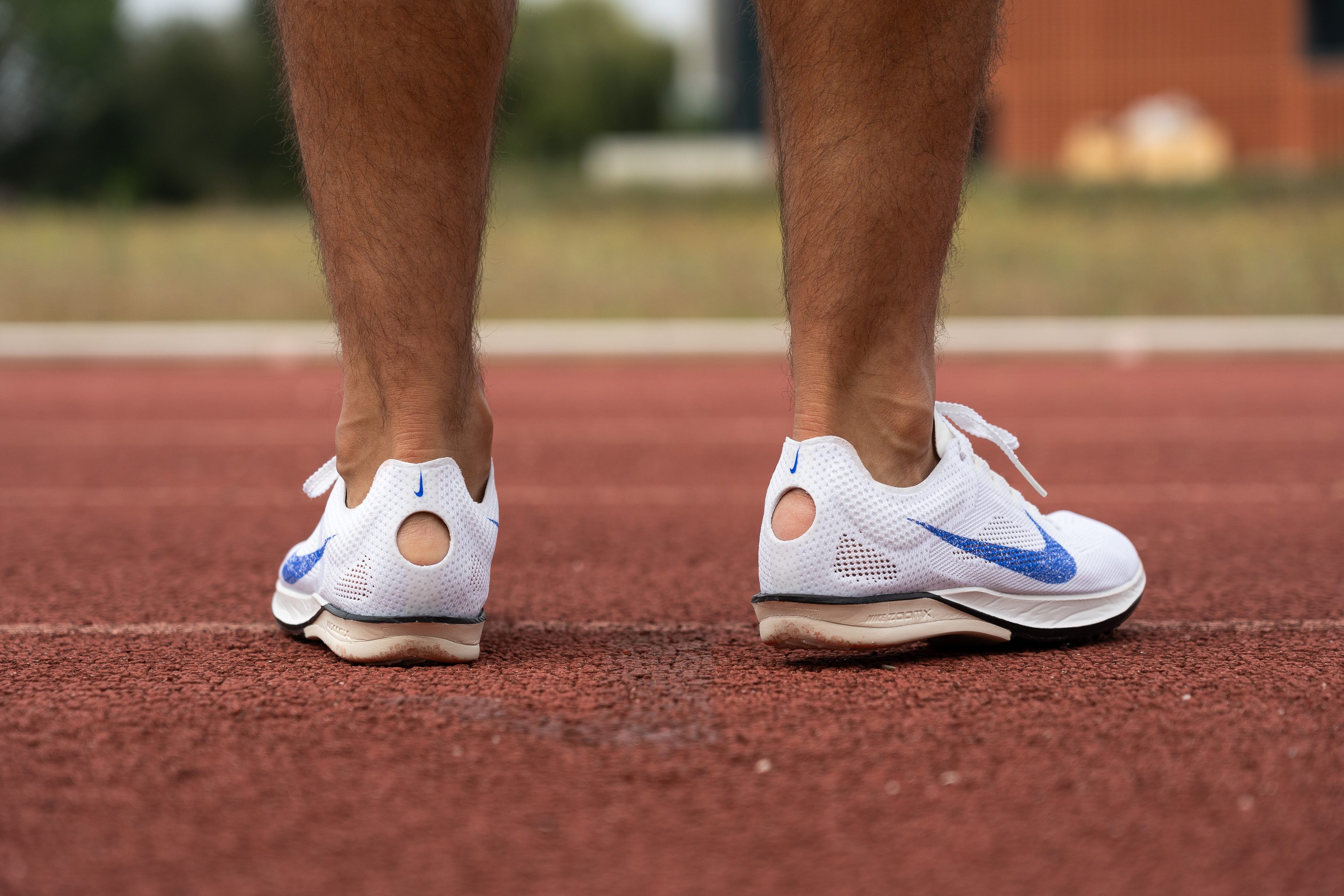
| Dragonfly 2 | Ninguno |

